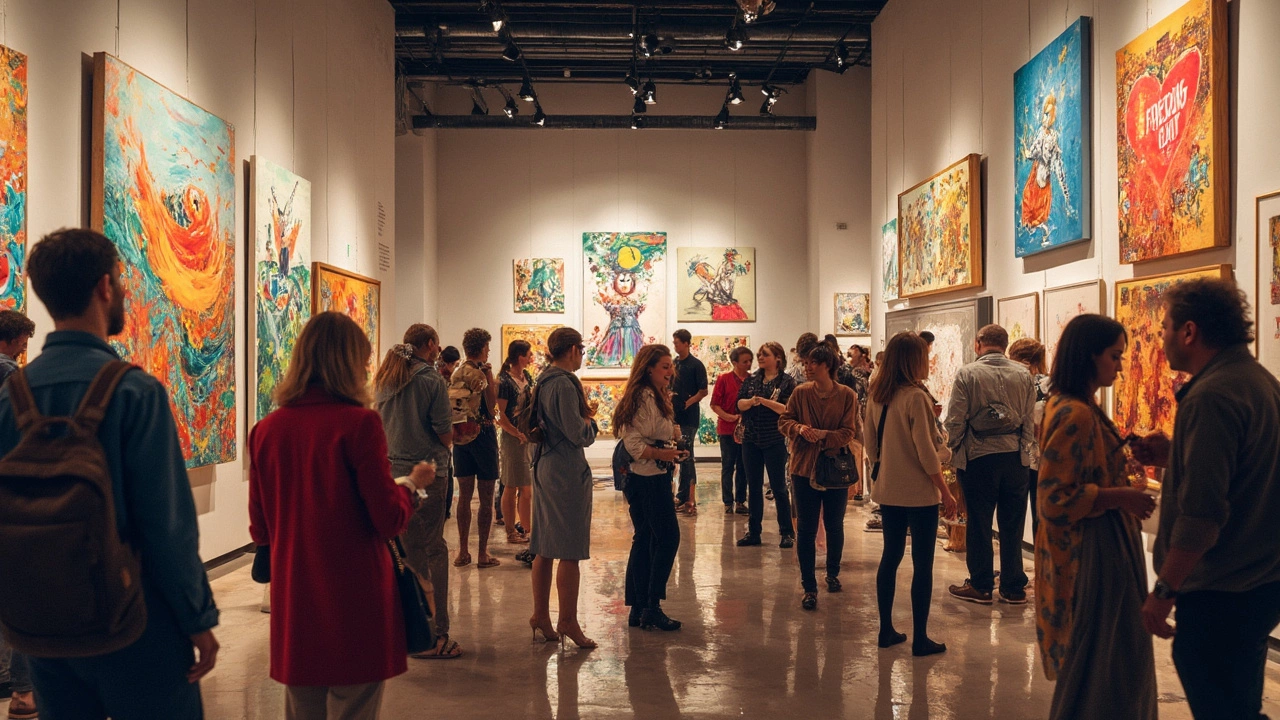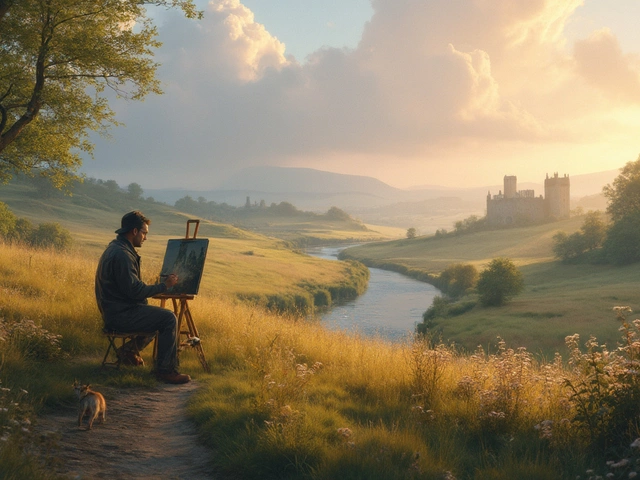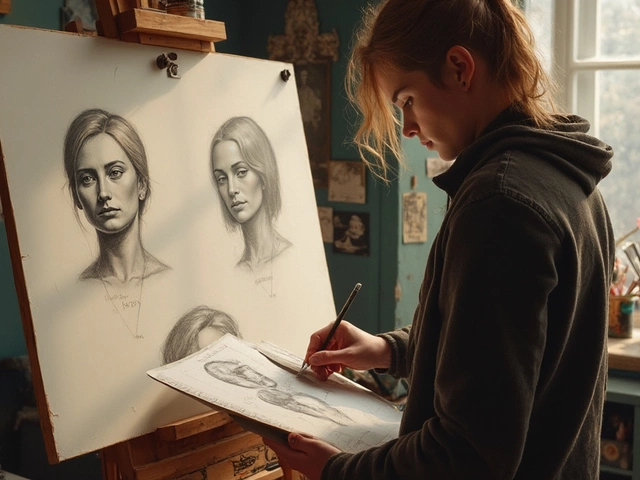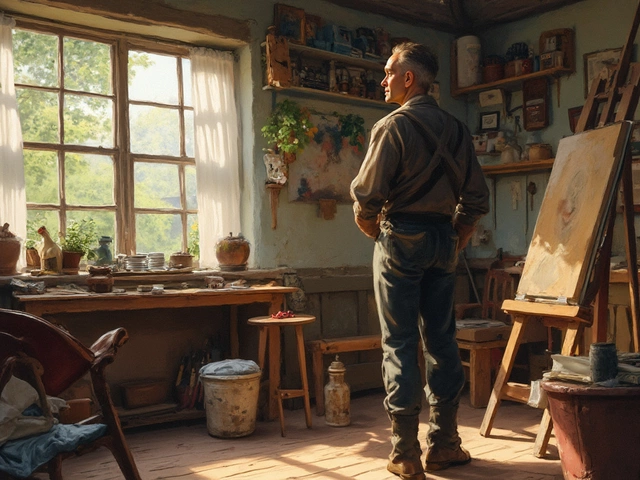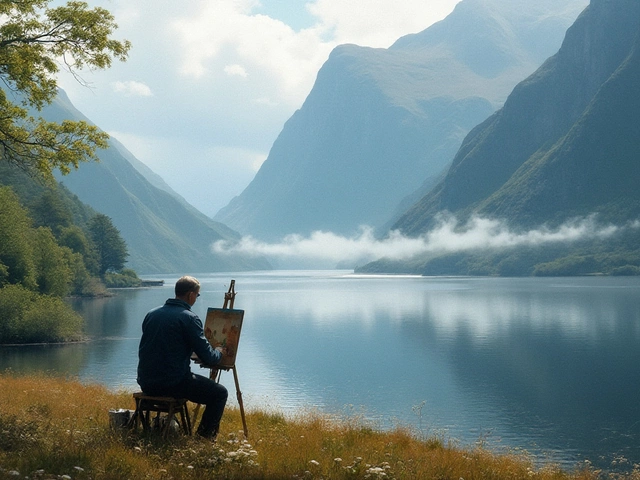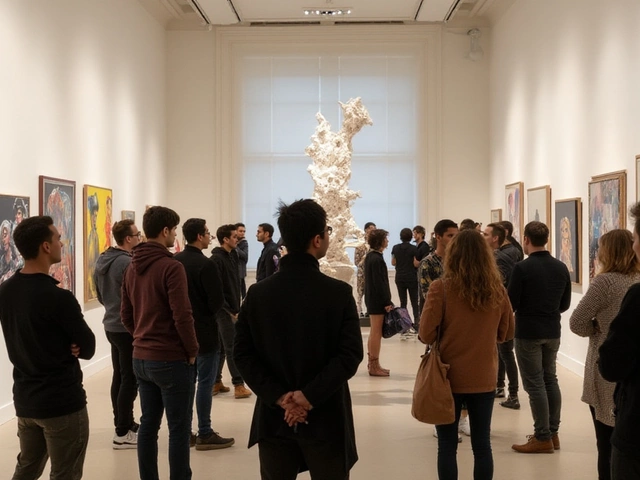So, you’ve got some killer pieces you’ve been working on, and now you’re itching to show them to the world. But, where do you even begin with your first art exhibition? It’s a question that many up-and-coming artists face. Don’t worry; I’ve got a few tips that might just help you get started on the right foot.
First things first, nail down your style. This might sound a bit obvious, but you'd be surprised how many artists aren’t clear on what makes their work unique. Knowing your style helps in finding a venue that suits your art and aligning with galleries that resonate with your creative vision.
Once you’re clear on your style, it’s time to think about where to showcase it. Look for venues that match your vibe. Your local art scene is a great place to start—check out community centers, cafes, or even pop-up galleries that host exhibitions. They’re often more open to first-timers than big galleries.
- Understand Your Style
- Find the Right Venue
- Crafting a Compelling Portfolio
- Networking in the Art World
- Promoting Your Exhibition
- Handling Feedback and Growth
Understand Your Style
Let's break down something really important—knowing your style as an artist. You might be thinking, "I like to dabble in everything." That's cool, but honing in on a style helps you find your niche and makes it easier for galleries and audiences to connect with your work.
Think about the themes you gravitate towards and the techniques you use. Ask yourself: What do I enjoy painting the most? What emotions or messages am I trying to convey? Knowing these things can help shape your artistic voice.
"Art should comfort the disturbed and disturb the comfortable." — Cesar A. Cruz
Take Cruz's quote, for example. If your art tends to evoke strong emotional reactions, make sure you're clear on that. It’s part of what makes your work stand out.
- Reflect on Your Inspirations: Look at the artists you admire. Is it the bold colors of Van Gogh or the minimalism of Agnes Martin that speaks to you?
- Experiment with Mediums: Play around with different tools—paints, digital, mixed media—and see which ones feel most natural.
- Seek Feedback: Sometimes, what we see in our work isn’t what others see. Get opinions from people you trust to gain fresh perspectives.
Understanding your style not only guides your creation process but also makes it easier to identify venues that align with your work. The journey of showing your art starts with knowing what you want to say and how you’re going to say it. Keep exploring and, most importantly, keep creating!
Find the Right Venue
Hey, now that you’re figuring out your style, it's time to talk venues. Picking where to showcase art is a huge deal, because location can either amplify your work or leave it lingering in obscurity. You’ve got to think about where your art fits best.
Start by scoping out local venues. Believe it or not, you don’t need to land a big gallery in downtown Vancouver right off the bat. In fact, cafes, community centers, and pop-up galleries can be awesome starting points. They often love supporting emerging artists like you, which makes them more approachable than the larger venues.
It’s also smart to visit these places before leaping in. Get a feel for what kind of vibe they have. Do they focus on abstract art, traditional paintings, or maybe modern installations? Make sure it aligns with what you’ve created. If you see art similar to yours there, it’s a sign you’re on the right track.
Okay, here’s the kicker: some places are downright amazing for reaching a broader audience. Take pop-ups, for example. In 2023, a survey found that events outside traditional galleries increased art exposure by up to 60%. That’s massive for getting noticed!
- Scope out local art fairs or events—perfect for networking with other artists and potential buyers.
- Don’t overlook online platforms. Websites like Artsy or Saatchi Art can help you reach folks who can't make it to in-person exhibitions.
- Ask for recommendations from fellow artists. They might know venues that’ve worked well in your town or beyond.
Choosing the right place isn’t just about visibility; it’s about finding a space that respects and understands what you’re all about. Remember, every artist starts somewhere, and each venue, no matter how small, can be a stepping stone to bigger things.
Crafting a Compelling Portfolio
Alright, let’s talk portfolios. Think of your portfolio as your personal art gallery in a binder (or a PDF if you're a bit more digital). It’s an essential tool that showcases your work and tells the story of your creative journey. But what makes a portfolio stand out in the crowded world of art exhibitions?
First up, be selective with what you include. You don’t need to throw in every doodle you’ve ever made. Aim for a focused collection that represents your best work and highlights your unique style. Generally, a solid portfolio should have 10-15 pieces that demonstrate your range and skill. If you’ve dabbled in different mediums, show a variety, but maintain a cohesive theme.
Next, presentation is key. High-quality images are non-negotiable. Whether you’re shooting them yourself or hiring a professional, make sure the lighting and composition do your artworks justice. This is especially crucial if you’re planning to email your portfolio to galleries or potential buyers who can’t see the works in person.
- Title your works: Each piece should have a title and a brief description that provides context or the story behind it. People love connecting with art through personal narratives.
- Organize logically: Arrange your pieces in a way that flows nicely, either chronologically or thematically. Make it easy for someone flipping through to get a sense of your evolution as an artist.
- Artist statement: Include a short paragraph about who you are as an artist. What inspires you? What do you aim to convey through your art? This gives galleries a peek into your creative process.
If you're unsure about the details, consider adding a small table summarizing key facts about each piece, like the medium used, size, and year created. Something like this:
| Title | Medium | Size (inches) | Year |
|---|---|---|---|
| Twilight Reflection | Oil on Canvas | 24 x 36 | 2023 |
| Urban Whisper | Mixed Media | 18 x 24 | 2022 |
Lastly, get feedback. Show your portfolio to fellow artists, mentors, or even that friend who’s brutally honest. They'll offer insights you might miss and help refine what you've got.
Creating a compelling portfolio isn't just about throwing your art into a fancy folder. It's your chance to impress and give people a reason to want to see more of your work. Nail this, and you're one step closer to rocking the art exhibitions scene.
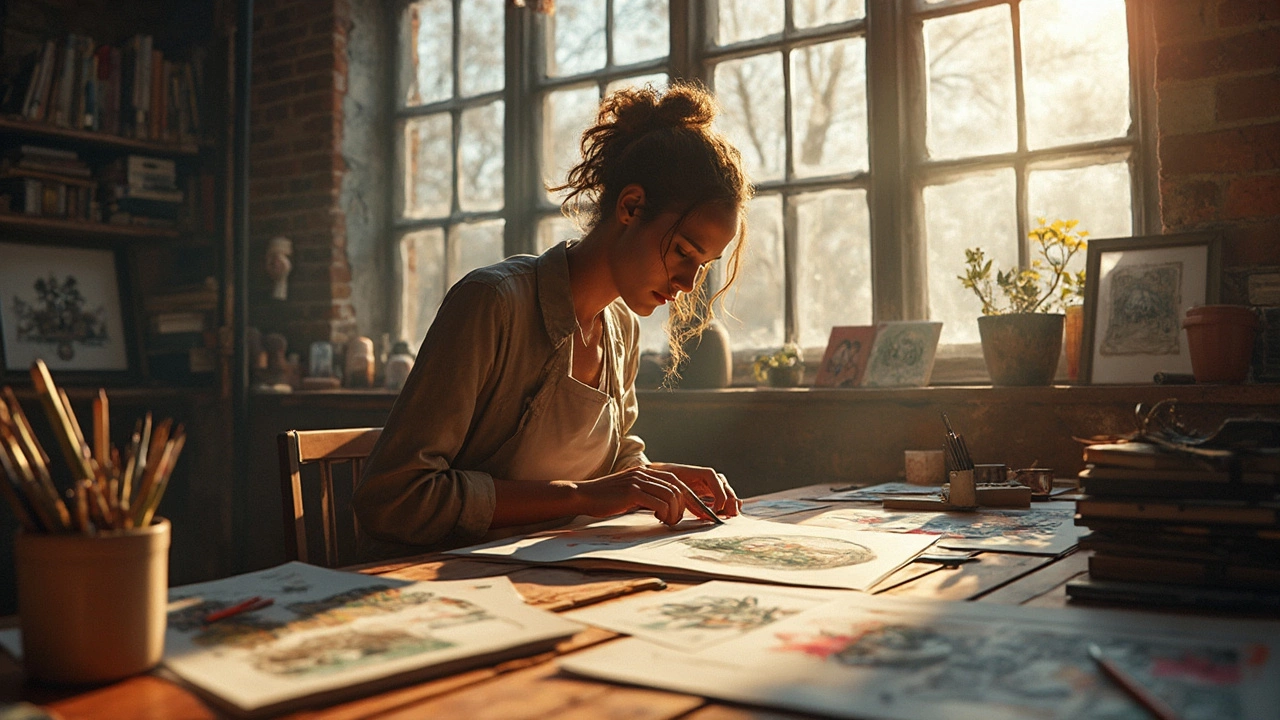
Networking in the Art World
Networking—it’s not just for business folks! In the art world, who you know can often propel you forward just as much as what you create. Building connections with other artists, gallery owners, and even art collectors is crucial. So, how do you go about this without feeling awkward or pushy?
Think of networking as building genuine relationships. Start by attending local art exhibitions and gallery openings. These events are fantastic opportunities to meet people who are already established or just as eager as you to showcase art. Approach people with curiosity rather than a sales pitch. Ask about their work, listen actively, and share your creative journey.
Social media is another powerful tool. Platforms like Instagram and Behance are practically made for artists. Regularly post your work, engage with other artists' posts, and be active in art-related hashtags or groups. This online presence can lead to real-world connections and opportunities.
Don't forget to join local art organizations or groups. These often provide members with opportunities to display art in group shows, access resources, and, of course, network. Look for art collectives or nonprofit organizations in your area in Vancouver or beyond—they're usually brimming with chances to meet the right people.
| Network Leveraging | Impact |
|---|---|
| Attend two art events monthly | Increase art exposure and meet potential collaborators |
| Engage with three new posts a day on social media | Improve visibility and foster connections |
Remember, patience is key. Building a strong network doesn’t happen overnight. Keep up the effort, stay authentic, and gradually you’ll find yourself moving through circles that can help you showcase art and further your career.
Promoting Your Exhibition
Once you've got your work set up in a great venue, the next step is to ensure people know about it. After all, the goal is for your art to be seen and appreciated. Effective promotion can make a world of difference in attracting visitors and potential buyers to your art exhibitions.
First, start by leveraging social media. Platforms like Instagram, Facebook, and TikTok are incredibly powerful for artists. Share sneak peeks of your artwork, behind-the-scenes processes, or stories about your pieces. Use relevant hashtags like #ArtExhibitions, #ArtGallery, or #LocalArt to reach a wider audience.
Consider creating an event page on Facebook. It's an efficient way to keep all potential visitors informed about event details like dates, location, and any special activities. Plus, attendees can easily share the event with their friends, giving your exhibition even more exposure.
Collaborate with influencers or local art bloggers who already have an established following. Invite them for a preview of your exhibition, and if they like what they see, they might share it with their followers. This kind of organic promotion can be especially valuable.
Don’t underestimate the classic approach of flyers and posters. They can still be effective in getting the word out, especially in community centers, coffee shops, and art schools. Make sure your flyer design reflects your style and includes all important details.
Email marketing is another great tool. Craft a compelling newsletter to send to anyone interested in your work. Include high-quality images, share stories behind the pieces, and invite them to your show.
Finally, engaging with local press can give your exhibition that extra push. Reach out to local newspapers or art magazines. A small write-up or mention in a local publication can boost the visibility of your show significantly.
Remember, promoting your art exhibitions is about making connections and telling the story behind your work. With the right mix of digital and offline strategies, you can draw the crowd your art deserves.
Handling Feedback and Growth
Ah, feedback—the thing that can either boost your confidence or leave you feeling like you just tripped in front of everyone at a fancy gala. But here’s the deal: feedback is a goldmine for growth in your art journey.
Start by inviting honest critique. Not all feedback is created equal, though. Seek out comments from fellow artists, mentors, or even visitors who attended your art exhibitions. These folks can offer insights you might have missed. They can help you see your work from a fresh perspective, which is priceless when you’re wrapped up in your own creative world.
Keep an open mind. It's easy to take criticism personally, but remember, it's not a reflection of your worth—just an opportunity to learn and refine. Absorb what’s helpful and toss what doesn’t gel with your artistic vision.
When it comes to growth, setting clear goals is crucial. Do you want your art to be fiercer, more detailed, or explore new themes? Map out what “growth” looks like for you. And hey, don’t forget to celebrate your progress along the way. Small wins add up, and they’re what keep you going when the going gets tough.
Networking, like feedback, can also play a big role in growth. Get involved in your local art community. Join groups or online forums where you can share experiences and ideas. More connections often lead to new opportunities.
If you're looking for some concrete numbers, a survey conducted by the Canada Council for the Arts found that artists who regularly engaged with their community and sought feedback were 35% more likely to report improved creativity and growth in their art practice. So yeah, get out there, show your face, chat a bit, and soak in what you can.
In the end, handling feedback and pushing for growth is all about staying open, setting your goals, and being a part of the vibrant world of art. It’s a journey that comes with its ups and downs but also a lot of personal wins.
